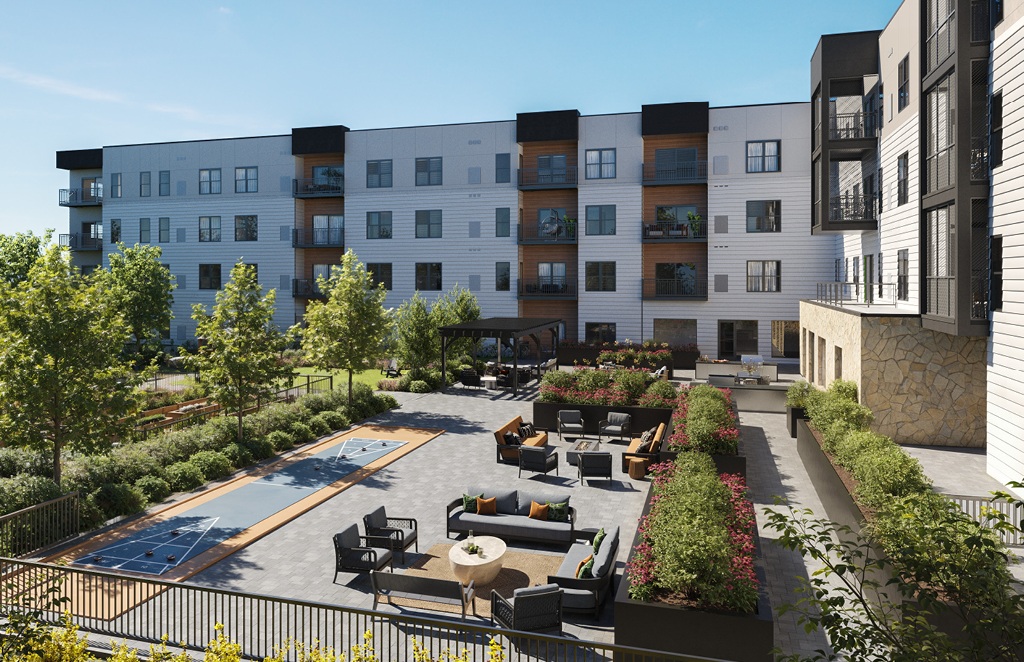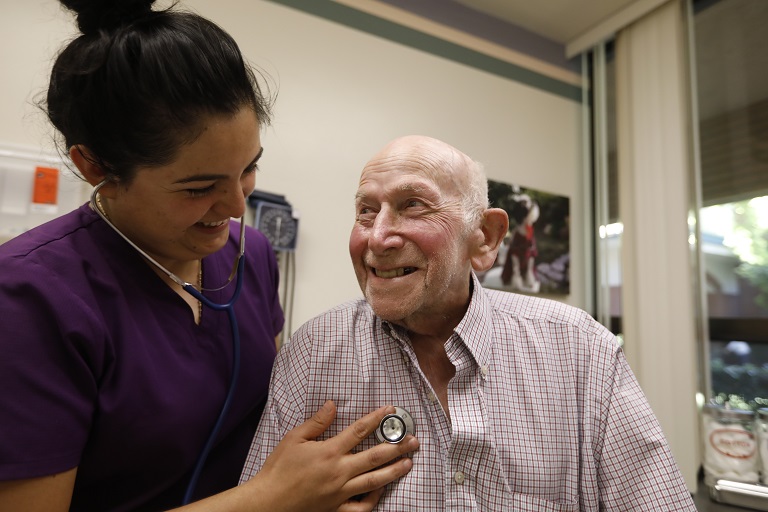Ebenezer is no stranger to setting trends—and building on its success. Almost 50 years ago, the Minnesota-based LeadingAge member developed the country’s first age-restricted cooperative housing community. The popularity of 7500 York in Edina, MN—a suburb of Minneapolis where Ebenezer is headquartered—set the nonprofit on the road to becoming the management company for 61 upper-Midwest co-ops built by other sponsors or developers.
In 2022, recognizing the increasing need for affordable living options for adults aged 62 and above, and leveraging its decades of expertise in managing co-ops, Ebenezer returned to the development side by launching a new division, Estoria Cooperatives, to build more co-ops as a middle-market option.
“Older adults are seeking choice, community, and control,” said Brett K. Anderson, president and CEO of Ebenezer, which serves over 14,000 residents in six states and offers a full continuum of living options and care. “While the economics of traditional senior housing have become more challenging, the real motivator was responding to what older adults are asking for … and Ebenezer has the experience” to bring more of these desirable options to market.
Affordable Ownership and Shared Responsibility
Housing co-ops allow older adult residents to have ownership stakes in their community, a say in how they are run, and freedom from home maintenance responsibilities.
Each household moving into a co-op building buys one share in the nonprofit corporation that owns the property. “If you’re in a 100-unit cooperative, you own one percent of everything—the common areas, the pickleball court, and the parking garage,” explained Anderson. The dollar value of a household’s share varies depending on the unit’s size. Residents, who sign an occupancy agreement that lays out terms of living in their unit, also pay a monthly fee (which varies with the share value) that covers mortgage costs, common area management, maintenance, possibly a reserve fund, and more.
Most of the co-ops Ebenezer manages have 40-year Department of Housing and Urban Development (HUD) master mortgages designed for nonprofit cooperative ownership housing corporations. Insured by the Federal Housing Administration (FHA) and authorized by Section 213 of the National Housing Act, these mortgages are intended to finance construction, rehabilitation, or conversion of multifamily rental properties to co-op ownership. The Section 213 program is often the only source for construction financing for housing co-ops, according to the National Cooperative Business Association, and Anderson said these mortgages are typically the most practical and attractive financing option. Residents, he added, appreciate the HUD mortgages’ security and insurance provisions, along with their low fixed interest rates and long amortization. And HUD, which monitors every step of the development process from land acquisition to design and construction, brings some reassurance as a “third-party pair of eyes on the project.” Shareholders also benefit from tax deductions for property taxes and, when there is a mortgage, interest payments.
At 7500 York, which has more than 330 units, today’s share prices for the smallest units start at $46,212 with a monthly fee of $1,436; the largest units’ share price is $100,373 with a monthly fee of $2,974. Apartments range between 775 and 1,445 square feet, with multiple floor plans.
“That is in Edina, Minnesota, which is a very expensive ZIP code,” Anderson said. “A $46,000 share price, while not insignificant, is likely money that a retired teacher, for instance, is able to put down, compared to a multiple six-figure entrance deposit.”
According to SeniorLiving.org, share prices in U.S. older adult cooperatives (more than 60% of which are in Minnesota) usually range between $100,000 and $225,000.
Share prices, and therefore owners’ equity, increase over time, though the appreciation is usually restricted, often to three percent annually, according to Anderson. “From a traditional home standpoint, it might not be high levels of appreciation,” he said. “But a lot of our folks are really looking at that as a long-term safe asset.”
Self-governance is a key tenet in the cooperative concept. Each community’s board is made up of resident-elected members, and Ebenezer, as manager, offers board training in good governance practices, including annual retreats. “We set the guardrails, but residents create the community,” said Anderson. Resident committees focus on everything from capital improvements, to health and wellness activities, to management of the community garden or fitness center.
A New Era of Development
Estoria Cooperatives is now developing its first two communities, the 89-unit Estoria Cooperative Lakeville, Lakeville, MN, scheduled to open in December 2025, and the 87-unit Estoria Cooperative Oak Marsh in Oakdale, MN, where construction began on October 1. Both are designated for adults 62 and older.
Estoria seeks to attract residents from the younger active adult market, but the co-ops do enable aging in place, Anderson said: “We have worked to design our units and our common areas for barrier-free living that should enable members to live in their homes longer.” He also noted that Ebenezer is part of Fairview Health Services, a large hospital and health care organization, “and [residents] can tap into all of our service partnerships. So, if [a resident] does need home care or rehabilitation after surgery or other services, we have the network … to engage with.”
“This newer generation of older adults want to live in their own homes,” said Anderson. “[This cooperative] is purpose-designed for aging, built around a community of like-minded people, and you’re still in a position to be self-determined about your future. We see this as a big part of the future and a game-changer, to meet demand and serve people how they want to be served.”
Image: An artists’ rendering of Estoria Cooperative Oak Marsh, now under construction. Courtesy of Ebenezer.
Do you have a story of innovation to tell? Use the LeadingAge Story Collector, powered by Greystone, to tell us your best new practices in operations, technology, workforce development, service delivery, partnerships, and more. Try it now.

 Shutdown Week Three: Impact of Ongoing Closure on Affordable Housing
Shutdown Week Three: Impact of Ongoing Closure on Affordable Housing


